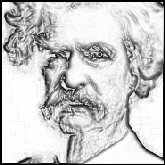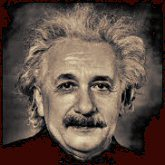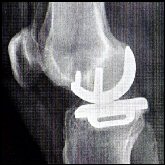 By Moises J Goldman & John Jonelis
By Moises J Goldman & John Jonelis
Today’s business culture is more strongly creative and entrepreneurial than at any time in history, posing new organizational opportunities and challenges. That calls for a new way to think about and implement design management. Using the language of the digital age, this article introduces a new perspective, applying a radically different technique to the management of the creative process, and then demonstrates an intuitive working model that functions in any modern organization. This is the first installment of a four-part article.

Current Management Models
Management models have undergone disruptive changes over the years. The early 1980s was a time when Japanese productivity achieved the highest level anywhere in the world. At that time, productivity had fallen in the USA, and many felt that America could and should learn from Japan. There was a real call to break from the Traditional Model of product management.

Curiously, the Japanese renaissance was, in large part, the product of an American—the pioneer W. Edwards Deming. He espoused high product quality coupled with a humane approach to managing people. He laid out a complex set of principles to realize those ideals. Deming built his approach on different assumptions than the Traditional Model. I had the pleasure of working at a company founded on his principles. This was rare in the USA, but the Japanese implemented his theories with fervor. Much can be said about the details, but when you boil it down to its simplest terms, Japanese success was actually based on three broad factors:
- A focus on a strong corporate structure
- Long-range staff development
- Consensus decision-making
These factors led to lower turnover, higher job commitment, and higher productivity. This initiative was then adapted for use in the USA by William Ouchi and became known as Theory Z.1 For a time, Eli Lilly, Rockwell International, General Motors, Westinghouse and many other large corporations embraced this new dogma.
But this new paradigm clashed with the ideas of western management and the expectations of an American workforce. Theory Z didn’t gain lasting traction in America, where the Traditional Model continued to dominate. Why the cultural clash? It has to do with the way we think—more particularly, the way in which we picture or imagine a process. Figure 1 lays out the Traditional Model of product management in graphical form:

Figure 1 – Traditional Product Management Model
The Traditional Model can be expressed as a high-level sequence and it is, quite simply, one specific mode of thought. To its credit, it does an excellent job of defining a product life cycle. Everything is placed neatly in a row. There is a defined beginning and end. But the weakness of this model slows many organizations that use it and it does nothing to improve or optimize a process. The inherent top-down mode of thought is a limiting factor, and is also limiting to the models that grew out of it or rose up in reaction to it.
New Paradigms
Nowhere was the contrast with Japan greater than in automobile manufacture. Japan, long known for its cheap, low-quality vehicles and other junk, began to crank out the best-made cars, electronics, and other products in the world. Meanwhile, Detroit remained mired in the concept of planned obsolescence. Consumers took notice and they voted with their wallets.
Then Toyota rolled out Just-in-Time Manufacturing (JIT) as a way of reducing the cost of inventory. Among other changes, JIT heightened the awareness of design management itself. Eventually America had to adjust if it was to compete with the Japanese, and the resulting chaos changed the way we do business today. Companies began to adopt JIT, and increasingly moved toward a new ideal—the Hollow Corporation—also known as the Virtual Business.6
At its extreme, the Hollow Corporation is an organization stripped of almost every function. Brand means everything and the company makes nothing. Everything is measured in money, and profit is the only goal. A simple example of a hollow corporation is an American clothing designer taking on a European-sounding name and making designer clothing in China for sale to the world. As this trend grew, companies outsourced more and more functions. This intensified the importance of brand marketing and marketing for globalization. While this was going on, America was busy transforming itself into a service economy.

Globalization Matures
But industry discovered that it was not only possible but also cheaper to manufacture products overseas and ship them back to US shores. Whole industries moved their factories offshore—especially to China. The entire textile industry left. Tool and dye left. Electronics manufacture left. With time, others followed, including crucial smokestack industries such as steel.
The next logical step was to offshore project management and product development. Creative and physical design had always been a key competitive advantage in the USA. Its business world smugly expected it to remain so. But due to the ability to collaborate across the internet, actual design began to take place at multiple locations across the globe, with products for sale to the world—and with great success.
These trends were not without intriguing and sometimes counterintuitive aspects. Businesses made adjustments.
- Many US electric generation utilities sold off their physical power plants in search of greater profits as distribution networks.
- Fluctuation in the currency market led Japanese automobile manufacturers set up production facilities in the USA, closer to the end consumer and using American workers—and still, American manufacturers struggled to compete with them.
- US automobile manufacturers and other industries abandoned the policy of planned obsolescence and over time learned the new culture of quality.
- South Korea began to design and manufacture high-quality goods—from pianos to automobiles to mobile phones.
- China began outsourcing to the Vietnam and other third world countries in search of even cheaper labor.

Lean
In the early 2000s, after the internet bubble burst, it became abundantly clear that the US needed a new competitive edge. A product management philosophy took hold, called Lean—Lean Development, Lean Manufacturing, Lean Planning, Lean Sigma, Lean Start-up. 2 Lean is a management philosophy that considers any part of the enterprise, which does not directly add value to the final objective, as superfluous—be it product development, customer service, or for that matter, the entire enterprise. It examines all processes and eliminates the ones that do not add value to the end objective. Lean is an attempted departure from the traditional way of doing business. It found favor in the US and, to one extent or another, became a dominant model.
The next article will compare and assess Lean in light of previous models. Then we will introduce an entirely new way to manage creative enterprises.
■
GO TO PART 2 – LEAN
Download full paper (PDF)
.References
- Deming, W. Edwards (1964) [1943]. Statistical Adjustment of Data. Dover. ISBN 0-486-64685-8. LCCN 64-24416. (1966) [1950]. Some Theory of Sampling. Dover. ISBN 0-486-64684-X. LCCN 66-30538.
- William Ouchi: “Theory Z” How American Business can meet the Japanese Challenge. Addison-Wesley Publishing Company, 1981
- Lean was originated by Eiji Toyoda and Taichi Ohno of Toyota Motors. Ohno, Taiichi (1988), Toyota Production System: Beyond Large-Scale Production, Productivity Press, ISBN 0-915299-14-3
- C. F., L. S. Shieh, Joint Automatic Control Conference, Michigan, p 454
- Shieh, L.S. and Goldman, M. J., 1974 I.E.E.E. Trans. Circuit Syst., 21, 341
- The Hollow Corporation, Anita Campbell, Small Business TRENDS (2012) https://smallbiztrends.com/2004/04/hollow-corporation.html
Graphics
Flow-charts by Moises Goldman and John Jonelis.
Graphics from MS Office.
About the Authors
 Dr. Moises J Goldman holds an MSEE and a PhD in Engineering Systems from UCLA, specializing in large-scale systems, process optimization, and product innovation. MBA from MIT Sloan, specializing in strategic planning and business development. His focus is on periods of challenge and change, including startup, growth and restructuring. Goldman served as CEO, COO, and CTO in diverse industries and developed business across the USA, Germany, Spain, Mexico, Dominican Republic, Jamaica, and Brazil, working with small firms as well as branded giants such as Lockheed, Rockwell, ATT, America Movil, GM, Ford, Scotia Bank, and HSBC. Sits on several boards where entrepreneurship and innovation are the primary goals. Consults to merging companies during the integration phase as well as startups, helping them become going concerns. Member of several advisory boards at MIT. Founding member of the TALENT program at IMSA. Dr. Goldman can be reached at Moises.Goldman@outlook.com
Dr. Moises J Goldman holds an MSEE and a PhD in Engineering Systems from UCLA, specializing in large-scale systems, process optimization, and product innovation. MBA from MIT Sloan, specializing in strategic planning and business development. His focus is on periods of challenge and change, including startup, growth and restructuring. Goldman served as CEO, COO, and CTO in diverse industries and developed business across the USA, Germany, Spain, Mexico, Dominican Republic, Jamaica, and Brazil, working with small firms as well as branded giants such as Lockheed, Rockwell, ATT, America Movil, GM, Ford, Scotia Bank, and HSBC. Sits on several boards where entrepreneurship and innovation are the primary goals. Consults to merging companies during the integration phase as well as startups, helping them become going concerns. Member of several advisory boards at MIT. Founding member of the TALENT program at IMSA. Dr. Goldman can be reached at Moises.Goldman@outlook.com
 John Jonelis patented seven products and developed dozens more in the field of air pollution control. Created the Revelation suite of trading algorithms. Private equity investor. Artist. Writer, and publisher of Chicago Venture Magazine and News From Heartland—the Journal of the Heartland Angels. Author of the novel, The Gamemaker’s Father. Illinois Wesleyan BFA, 1974. Kellogg MBA 1989.
John Jonelis patented seven products and developed dozens more in the field of air pollution control. Created the Revelation suite of trading algorithms. Private equity investor. Artist. Writer, and publisher of Chicago Venture Magazine and News From Heartland—the Journal of the Heartland Angels. Author of the novel, The Gamemaker’s Father. Illinois Wesleyan BFA, 1974. Kellogg MBA 1989.
Copyright © 2019 Moises Goldman & John Jonelis. All rights reserved. Quotation with attribution is permitted for educational purposes.
Chicago Venture Magazine is a publication of Nathaniel Press www.ChicagoVentureMagazine.com Comments and re-posts in full or in part are welcomed and encouraged if accompanied by attribution and a web link. This is not investment advice. We do not guarantee accuracy. Please perform your own due diligence. It’s not our fault if you lose money..
.
.







































































































































































Pingback: CONTROLLED DESIGN MANAGEMENT – Part 2 | The Gamemaker's Father
Pingback: CONTROLLED DESIGN MANAGEMENT – Part 2 | Chicago Venture Magazine
Pingback: CONTROLLED DESIGN MANAGEMENT – Part 3 | Chicago Venture Magazine
Pingback: CONTROLLED DESIGN MANAGEMENT – Part 4 | Chicago Venture Magazine